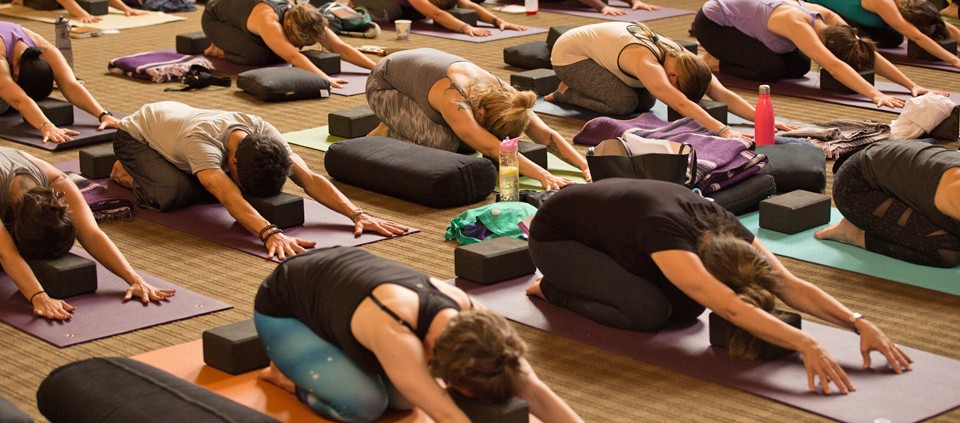The Strategy of Surrender: High Road or Cop-Out?

by Janet Arnold-Grych
A few years ago, I found myself on the fringes of a conversation between a fellow yoga student and the instructor. The student was relaying a difficult life situation to the teacher, who replied, “Surrender, just surrender.” I remember thinking, “What? Isn’t that just giving up? Wimping out?”
That line between righteous struggle and surrender still nettles me. It’s one thing to trust, it’s another to lean into apathy and wait for or expect the universe to deliver. How to know the right course of action and one’s role in all of this?
To understand surrender as the space between where my control ends and the outcome begins is easier when the markers are clearly defined. I can do everything in my power to get that job promotion, for example, but then I have to let go of the results. Perhaps there are variables, like other applicants or budget considerations, that will influence the final decision. My job is harnessing tapas—the fire I need to contribute my personal best. Then I can stand apart from what happens, whatever it may be.
When the formula between inputs and outcomes becomes murkier, so does surrender. That murkiness could come in the form of serious illness; concerns over children; or even those days, months, years where it seems we are just out of sync with the world. When our role in advancing a desired goal is less clear, it can feel maddeningly feeble to step back and say, “Okay, universe, you take it. I’m out.” In these gray-area situations, is surrender really just desertion?
Rather than throwing up your hands when you feel bereft of control, there are tools you can tap into, says Jonathan Foust (Sudhir), MA, cofounder of the Meditation Teacher Training Institute and a Kripalu Schools faculty member. “When you feel lost or unclear,” says Jonathan, “it’s helpful to remember that in any given moment you can pause. When you breathe, relax, and feel, you move from your story to an embodied sense of here and now. Can you take the seat of the non-judging witness? Can you look closely at your inner experience with empathy and compassion? If so, you may be able to open your intuitive faculties and inquire as to which actions might be most skillful in this situation.”
Harnessing our inner tools and guidance can help us to do what we can, but it still doesn’t guarantee a happy ending. In the Bhagavad Gita, Arjuna is caught between warring factions of his family. Distressed by his situation, he slumps to the bottom of his chariot, saying (much more eloquently), “I’m out. I can’t do this. I give up.” Krishna, his disguised charioteer, responds, “No, it’s not that simple. You still need to act. You just need to let go of the outcome—whatever it is.”
Jonathan says he’s come to recognize that releasing attachment to the end result is the key to personal freedom. “Every ounce of my personal suffering seems to come from the degree I am holding on and attached, whether to a specific outcome or to some sense of identity I want to preserve and present to the world,” he says. “As Einstein said, ‘No problem is ever solved in the same consciousness that created it.’ Sometimes, simply reflecting on the release of attachment can free up your heart and mind, and open your intuition to new possibilities.”
To better cultivate the capacity to surrender, Jonathan suggests reminding yourself that what you are surrendering to is your own inner wisdom. To connect to that wisdom, he offers three practices:
- Practice contentment, or santosha. Notice how the feeling of contentment shifts your relationship to your life.
- Practice gratitude. Cultivate appreciation of what is present in your life. Train yourself to look for the good.
- Practice kindness. When you are kind to yourself and others, you come into a more intimate relationship to yourself and the world around you.
Perhaps surrender is not submissive at all. To hold fast to right action—whether that is kindness or gratitude or whatever is required by the situation—while peeling away expectation, may, in fact, be a bold act of courage. Being present in our lives, whatever comes, opens the door to growth and transformation.
Janet Arnold-Grych is a yoga teacher and writer whose work has been published in Elephant Journal, Huffington Post, Third Coast Digest, and other outlets.
© Kripalu Center for Yoga & Health. All rights reserved. To request permission to reprint, please e-mail editor@kripalu.org.